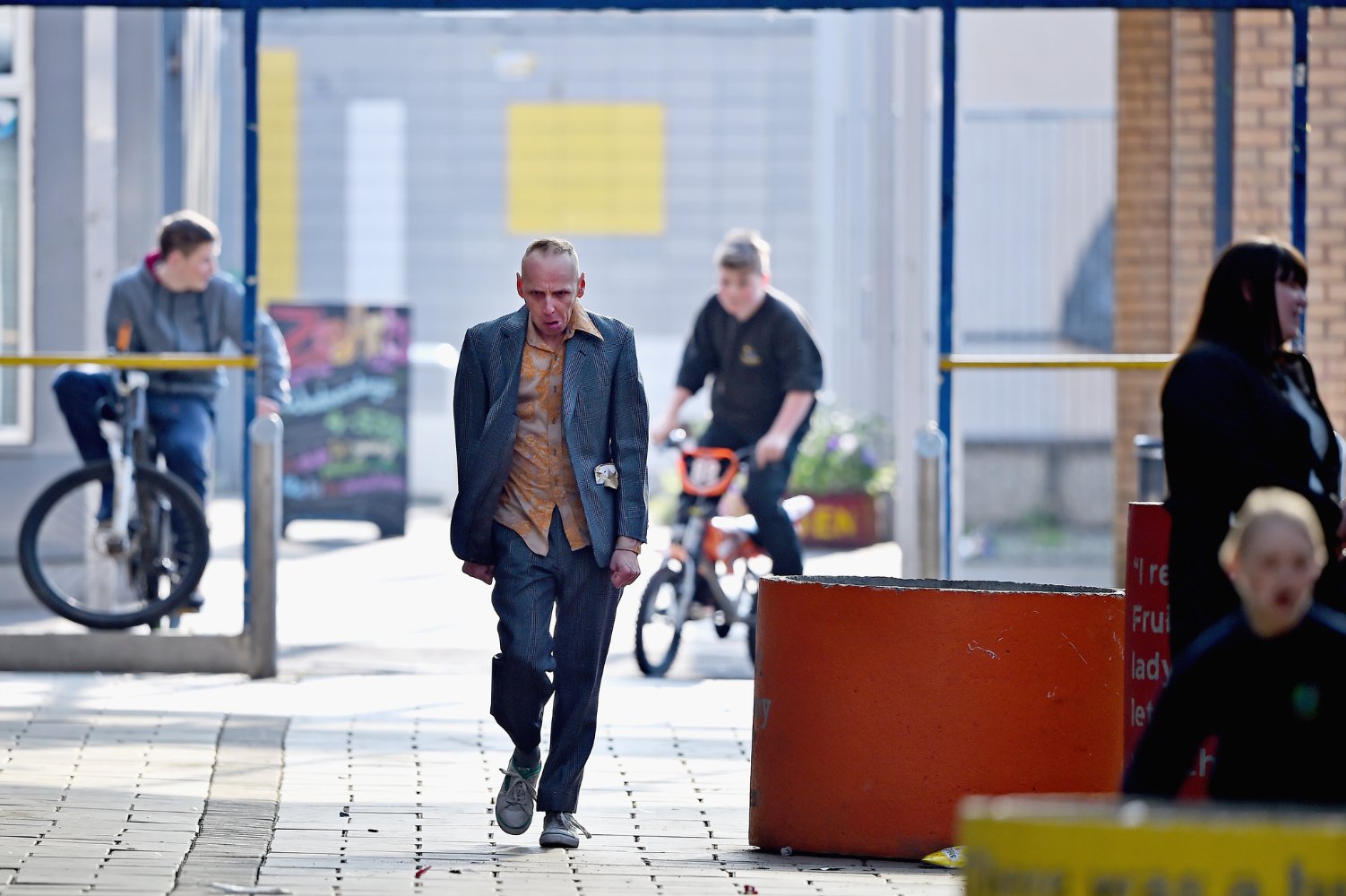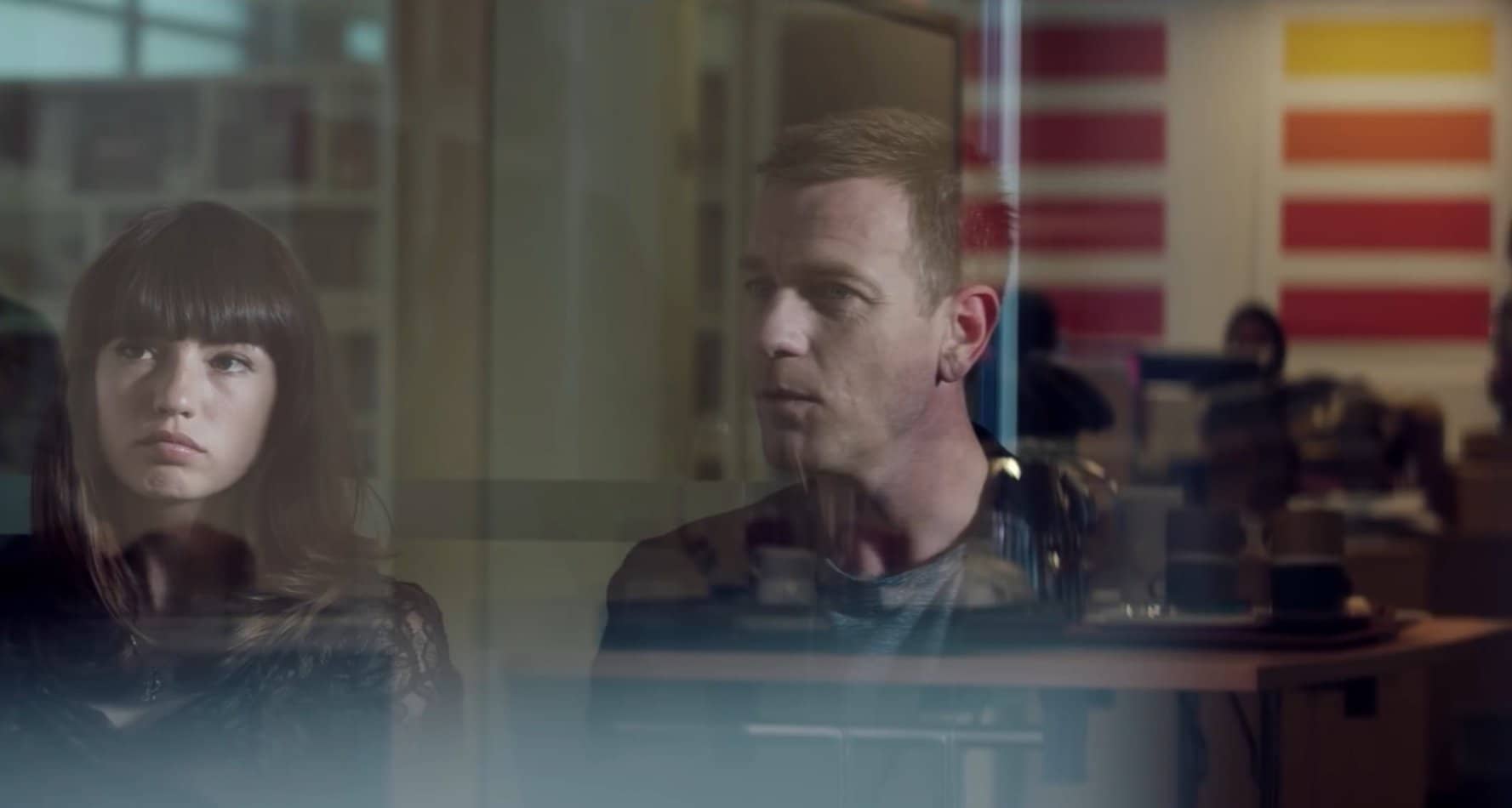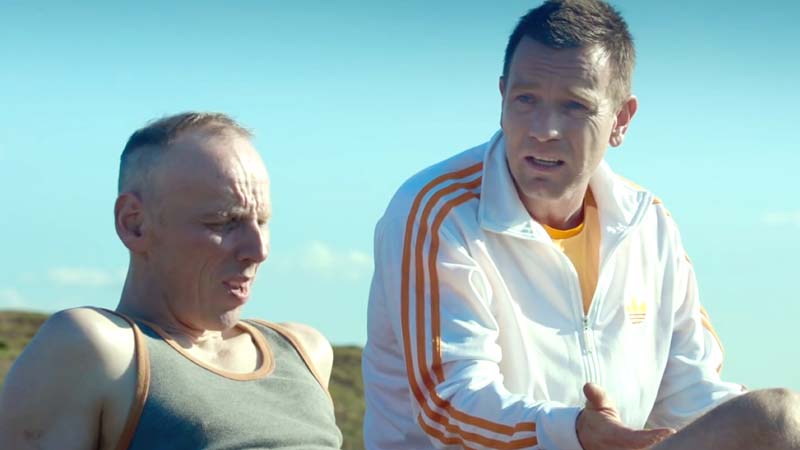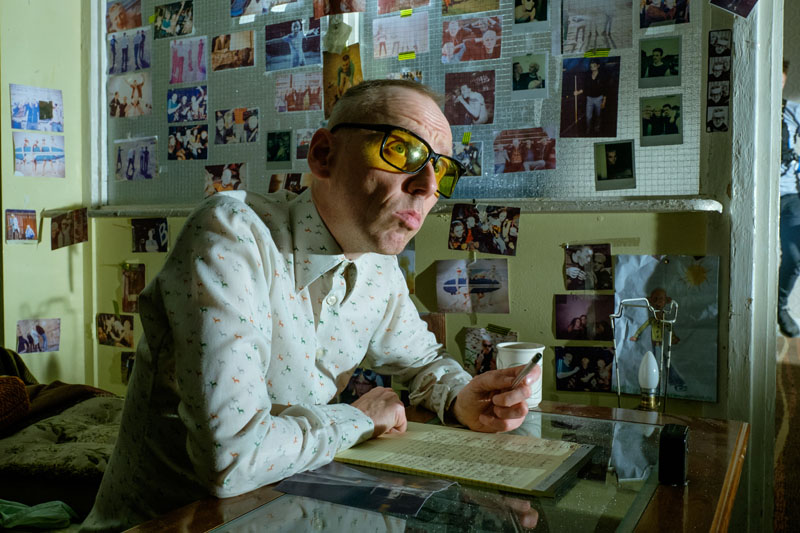5. Wildly crafted

The style of “Trainspotting” made it feel like a rush of heroin into the system, and “T2 Trainspotting” continues with this exuberant style. Boyle can’t help but make the most of current technology (as well as the higher budget) to make the film an even more kinetic feast. He employs drones to achieve dizzying shots, appropriate use of CGI to get some stunning shots, and digital camerawork to film in low-lit nighttime areas.
Some of the film’s sequences are made more exciting with the use of some well-placed post-production effects, particularly the scenes showing the newly rekindled friendship between Mark and Sickboy, with the effects in this scene emphasizing the excitement of these two men hanging out like they did 20 years ago. It’s effects like these that contribute to the film’s entertainment value, but also highlight the almost psychedelic rush these characters can get from each other without the aid of drugs.
With regards to honing his manic style, Boyle really hit the ground running, showing off his confidence in directing with just his debut, “Shallow Grave”, so it was not much of a surprise to see just how much of a handle he had on the camerawork, effects, sound, and music choices for “Trainspotting”.
But 20 years and nine directorial efforts later, he’s been given even more of a chance to work on his already impressive skills, working meticulously on every scene to make them all effortlessly as memorable as the last. That’s the sort of skill that most directors dream of having for at least one of their films, and Boyle has demonstrated it in just about every one of his films, with “T2 Trainspotting” being absolutely no exception.
6. The key difference in subject matter

Although both films are more about friendships than drugs, it’s clear (especially from Mark’s “choose life” opening monologue from “Trainspotting”) that heroin makes up a big part of the first film.
Heroin is the main reason anyone does anything in “Trainspotting”, with not only plenty of scenes showing the characters using the stuff, but also scenes of them finding ways to get the money for heroin – deciding to give up the habit, relapsing, overdosing, having withdrawals, and how their drug habit affects their emotional state and their place in life.
Heroin has been just about expunged from their lives and in the sequel, as Mark, Sickboy, and Spud have more or less given up the drug for varying amounts of time.
Although they’ve managed to get it out of their system, the effects of the initial drug use has had repercussions on how they live their lives in their mid-40s. There’s evidently a maturity in this sequel and in the characters as they try to band together to make something great for themselves, moving further away from heroin and any other bad habits they had in the first film.
As Mark says to Spud in this clip, “You’re an addict. Just be addicted to something else.” He then suggests running as a way to get high whilst improving your body rather than damaging it, but Spud doesn’t seem that interested. He does seem to become interested in a creative outlet later on in the film, getting metatextual in regards to this franchise’s source material (Irvine Welsh’s novel Trainspotting and its sequel Porno).
The lives of addicts are giving a great deal of hope in this sequel, which shows that it’s possible that even harmful addiction can be channelled into something more positive, like exercising the body or mind. Although “T2 Trainspotting” isn’t the most uplifting film of this year or any year, this is an inspiring example for anyone who related a little too closely with the careless characters of the first film, letting them know that middle age is still an age to try and turn their lives around.
7. Sticking with the main theme of friendship

At the core of “Trainspotting isn’t heroin”, but friendship, and that theme is even more prevalent in this sequel. Friendship is rather important for twentysomethings, as it’s a time of growing up and changing together, but it’s even more important for fortysomethings, when the culture isn’t made for you anymore. You’ve done most of the growing up and changing you’re going to do, and there are more stresses and less safety nets in life, which means you’ll be more in need of a friend by your side to make you feel better.
For these characters in the sequel, a friend can be an actual lifesaver. These four characters are shown in “Trainspotting” to just be meandering around with their drug habits with little sense to how they came together.
In the opening credits for this sequel, these characters are shown as children (along with Tommy) playing footy with each other, establishing the friendships right from the start and revealing how long they’ve known each other. This sequel also has to stress how this team has to come back – they must deal with bitterness, grudges, self-loathing, and age to get back together as the friends they used to be.
Although Mark, Spud, and Sickboy manage to get their heads together and attempt to venture into small business, it’s the uncontrollable Begbie who’s still considered the outcast of the friends, despite his persistence at remaining in the friend group. He’s the sort of person who hasn’t been able to flush the animosity from his life like the other three have, somewhat making him the antagonist of this sequel who poisons the lives and ambitions of anyone close to him.
“T2 Trainspotting” deals with the positive side of friendship, but also addresses the more troublesome aspects where certain friends do have to be expunged like a bad habit. It’s refreshing to see a film comment so enjoyable, yet deeply involved in this theme.
Friendship is one of the greatest aspects of humankind, yet it’s rarely explored in modern films, especially with such relatable characters as these four lads. “Trainspotting” was a rare film to do this, and now the sequel has done it again and taken it to a new level.
8. Another timely film for the ages

“Trainspotting” became a sensation in the 90s for a good reason: it was an incredibly modern film that felt like it captured the era in an artful way, and every passing year since, it has proven how true that is and how much it’s avoided becoming outdated. The rush, thrill, joy, and terror it gave to audiences still resonates today, but it is still very much a product of its time.
“T2 Trainspotting” attempts to do the same and it succeeds. Mark brings up social media like Facebook and Instagram in his new “choose life” monologue, and the characters are seen at one point to be using an Instagram-esque photo filter mobile app; however, this film goes far beyond simply throwing these staples of the 2010s to make it seem relevant.
The film certainly does look and sound like its time, but more importantly, it feels like its time. The erosion of individuality in an overpopulated bureaucratic nightmare instilled an almost suicidal level of nihilism in the characters from “Trainspotting”, but now they have to face this increasingly soulless capitalist culture with sober eyes, replacing their lack of emotions with regret and desperation, no matter how much they try to dress up their lives with nostalgia gazing or funny mobile apps.
Time will tell if “T2 Trainspotting” will be as much of a time capsule as “Trainspotting” was, though the unfortunate lukewarm reception it’s gotten so far hints at it being less recognized than the first. Hopefully this unusually slow reaction snowballs into more of an appreciation, as this sequel is indeed another stunning and rich film about modern culture and the people who inhabit it, making it the perfect companion piece to its predecessor from 20 years ago.
Author Bio: David Morgan-Brown is an Australian lover of movies, films, flicks, and kino pictures. He does written reviews for Colosoul, video reviews for Flim Reviews, and does comedic skits with his mates for Carpool — go laugh with (or at) him.